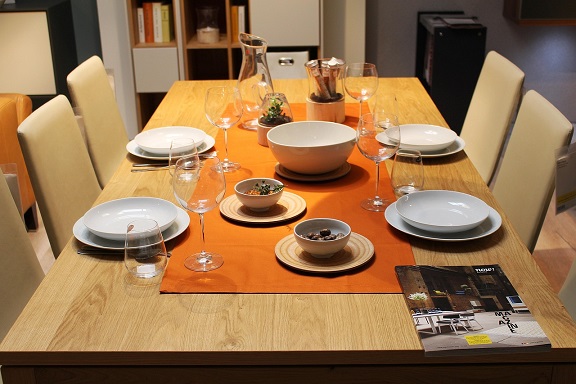
Dining in Germany is more than nourishment – it’s a structured, culturally meaningful ritual that blends tradition, etiquette, and unspoken social codes. If you’re ever invited to a German home or planning to dine out in Berlin, Munich, or a quiet village in the Mosel, understanding how to behave at the table will help you avoid awkward stumbles – and earn respect.
This guide covers the essential rules of German table etiquette, from seating and utensils to conversation and toasts. We’ll also show you how to respond to invitations, how to leave the table with grace, and why some rules matter more than they seem.
Why German Table Manners Matter
In Germany, etiquette signals respect – for the host, for the shared meal, and for each guest’s comfort. Even in relaxed settings, Germans appreciate good manners. Being too casual can come across as careless, while small gestures of etiquette are often seen as signs of emotional maturity and cultural awareness.
Arrival: Don’t Be Late – or Empty-Handed
The first rule begins before you even sit down. Punctuality is key. Arriving more than 5-10 minutes late without calling is considered rude.
Bring a small gift: a bottle of wine, a bouquet (avoid white lilies or chrysanthemums), or a regional treat. It’s not just polite – it shows appreciation for the invitation.
➡️ Full guide: From Kaffee to Kompliment: Dining Invitations and How to Respond in Germany
Where and How You Sit
In formal or semi-formal settings, the host may assign seats – follow their lead. If you’re unsure where to sit, ask politely (“Wo darf ich sitzen?”). In traditional settings, seating can reflect status, seniority, or guest roles.
Wait for everyone to be seated and for the host to begin the meal with “Guten Appetit” before eating.
Posture and Hand Placement
German table posture is quite specific:
- Sit straight, not slouched
- Keep both hands visible above the table (no hands in lap)
- Rest wrists or forearms on the edge, but not elbows
It’s seen as polite, engaged, and attentive.
➡️ Details here: Hands on the Table: German Dining Gestures and Cutlery Rules
Using Cutlery Like a German
The German style of eating uses the fork in the left hand and the knife in the right throughout the meal. Food is not cut and then forked American-style. Instead, Germans cut and eat as they go.
Don’t:
- Switch fork to the right hand
- Wave utensils while talking
- Lick knives or rest elbows on the table
Cutlery positioning matters:
- Crossed on plate = still eating
- Parallel = finished
Table Talk: Say Something… but Not Everything
Germans generally value meaningful conversation over filler. Light small talk is fine, but expect thoughtful, honest discussions rather than constant banter.
Safe topics:
- Travel, books, hobbies, food, architecture, nature
Caution zones:
- Politics, income, religion, personal drama – unless you’re with close friends
Silence is not awkward – it can be respectful. Don’t feel the need to fill every pause.
➡️ Explore: German Table Talk: What to Say (and What Not to Say) at Dinner
Toasts and Drinking Rituals
Never take a sip of alcohol before the first toast. When someone raises a glass and says “Prost!” (cheers), make direct eye contact as you clink – it’s taken seriously.
If the host toasts with “Zum Wohl,” reply the same. For water or soft drinks, it’s best to toast with everyone, even if you’re not drinking alcohol.
Eating Pace and Participation
Don’t begin eating until the host invites you – usually with “Guten Appetit!”
- Chew quietly, don’t talk with food in your mouth
- Participate in conversation
- Avoid using fingers unless it’s clearly finger food
Finish all food on your plate unless told otherwise – waste is frowned upon.
Children and Family Dinners
Even casual family meals follow these customs. Children are taught to sit still, eat politely, and speak respectfully. If dining with a family, expect structured mealtimes and clear behavior expectations.
End of the Meal: Tipping, Thanking, and Leaving
If you’re at someone’s home:
- Offer to help clear the table
- Thank your host sincerely (“Vielen Dank für das leckere Essen”)
- A follow-up message or thank-you gift is appreciated for formal meals
If at a restaurant:
- Tip 5–10%, given directly to the server with a polite phrase (“Stimmt so” = keep the change)
- Don’t linger too long unless invited – when plates are cleared and drinks finished, it’s time to go
➡️ Read: The Toast and the Tip: How to End a German Meal Properly
Cultural Values Reflected in Table Manners
| German Value | Expression in Dining Culture |
|---|---|
| Ordnung (order) | Seating rules, utensil use, clear customs |
| Pünktlichkeit | Timely arrival and structured meal flow |
| Ehrlichkeit | Honest but respectful table conversation |
| Respekt | Thoughtful toasts, polite gestures |
| Gemeinschaft | Shared meals and inclusive atmosphere |
For Tourists, Expats, and Curious Diners
You don’t need to be perfect – but showing respect for local norms makes a big difference. Germans won’t expect you to know every rule, but they’ll appreciate effort, humility, and a sincere “Danke schön.”
Key Takeaways
- Be punctual and bring a modest gift if invited
- Wait for the host to sit, speak, and begin
- Keep hands visible, posture upright, and utensils in correct hands
- Engage in respectful, thoughtful conversation
- Follow toasting traditions and tipping rules
- Show appreciation at the end
Explore the Full Series
➡️ German Table Talk: What to Say (and What Not to Say) at Dinner
➡️ Hands on the Table: German Dining Gestures and Cutlery Rules
➡️ From Kaffee to Kompliment: Dining Invitations and How to Respond in Germany
➡️ The Toast and the Tip: How to End a German Meal Properly
➡️ The Art of German Small Talk
Make Your Place at the German Table Count
Dining with Germans can be a rich and rewarding cultural experience. Whether you’re at a formal dinner, a cozy Sunday meal, or a holiday celebration, a little etiquette goes a long way. Use this guide as your cultural toolkit – and you’ll not only avoid faux pas but leave a lasting impression.







